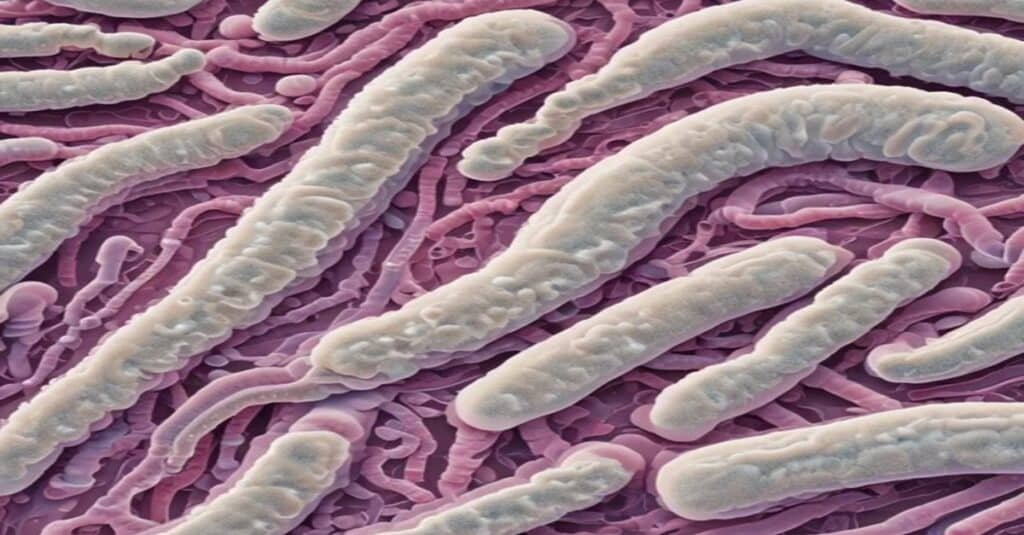Click here to read Part 1 of this series.
Ron Fouchier of the Erasmus Medical Center in Rotterdam, the Netherlands, developed new, infectious strains of H5N1, which he first showed to the public in September 2011 during an influenza conference in Malta. Ten times, the virus was transferred from the noses of infected ferrets to the noses of uninfected ferrets after three modifications were made to the H5N1 virus genome. According to these ten passages, the H5N1 virus has acquired the ability to spread among ferrets by respiratory droplets or aerosols.
Ongoing surveillance and research are crucial in order to understand how the virus behaves and prevent further outbreaks. Health authorities continue monitoring for mutations that might increase the risk of human transmission.
Understanding of H5N1 is essential for management of its impact on health and agriculture as well as preparation for possible future outbreaks.
To see the video below on YouTube click here.
Treatment For H5N1
Flu antiviral medications can be used to treat H5N1 bird flu, and they are most effective when taken as soon as symptoms appear.
Human cases of H5N1 avian flu are treated as emergencies because the diseases are quite virulent. Below are the key features of its treatment.
Read to know more about Blockchain in Healthcare Technology
1. Antiviral Drugs
The two well-known drugs with which Oseltamivir and Zanamivir can be used for the treatment of H5N1 virus are Tamiflu and Relenza, respectively. They must be administered within the first 48 hours to produce effective results.
Amantadine and Rimantadine may be used, but they reveal low efficacy levels for H5N1 that are considerably varied from those with other varieties.
2. Supportive Care
Patients will require supportive care to alleviate symptoms, such as:
Oxygen Therapy: To help with shortness of breath.
Intravenous Fluids: To hydrate, especially in severe cases.
Monitoring: Ongoing monitoring for respiratory distress and other complications.
3. Hospitalization
Hospitalization is usually required for severe cases, especially if pneumonia or acute respiratory distress syndrome (ARDS) occurs.
4. Preventive Measures
Vaccination: Though a specific vaccine does not exist in humans for H5N1, work continues. Other types of vaccines used for different types of influenza do help to create a cross-immunity.
Post-exposure Prophylaxis: Anyone who comes in close contact with birds or infected patients can receive prophylactic drugs, mainly antiviral medicines.
5. Research and Future Treatment
Future efforts remain on trying to create the vaccine and medicines as efficacious against the H5N1 avian influenza viruses by minimizing potential mutation along with enhanced transmission among the viruses.
Quick recognition and effective intervention in medicine often help alter prognosis in diseases from H5N1 viruses. Recognition and speedy medical care, in a high degree of understanding, might prevent mortality cases related to this pathogen.
What to do to protect yourself
- People should always view wild birds, poultry, and other animals from a distance and refrain from coming into direct touch with sick or dead animals as a general precaution.
- Wear the appropriate personal protection equipment (PPE) if you must come into near or direct touch with sick or dead wild birds, poultry, or other animals. Avian influenza (flu) A virus can infect wild birds even if they don’t appear ill.
- Avoid touching objects or materials (such as bedding or animal litter) that have been contaminated by the mucus, saliva, or excrement of domestic or wild birds or other animals that have been infected with the avian bird influenza A virus.
- It is not recommended to handle or ingest raw milk or raw milk products, particularly if they originate from animals that have a confirmed or suspected avian influenza A virus infection.
People should contact their state veterinarian or USDA’s toll-free number at 1-866-536-7593 to report sick birds or other animals or unexpected bird or animal deaths to the state or federal government.
.
Want to know best exercises for weight loss
Current Research and Developments
Human diseases have occasionally been brought on by these epidemics in poultry, dairy cows, and other animals, mostly as a result of contact with diseased animals. These events took place during a prolonged avian influenza A(H5N1) epizootic, which is a disease outbreak that spreads throughout an animal population, that affected wild birds all over the world for years.
The current outbreak began in late March 2024 when H5N1 bird flu was reported in dairy cows, and the first human cases started in early April. In nine months, much work has gone into monitoring and testing, along with virus surveillance and characterization, along with worker protection and coordination with both animal and human health services.
Although we think there is currently little risk of H5N1 bird flu to the general public, those who are exposed to infected animals at work or during leisure activities are more vulnerable, particularly if the proper precautions are not taken, such as wearing personal protective equipment. These could consist of:
- Farmers and laborers who handle contaminated animals or their waste.
- Owners of backyard flocks of birds.
- Workers that provide care for animals (such as veterinarians and staff at wild animal facilities).
- Responders in public health and animal health.
- People that interact with animals for fun (such as hunters and wild bird watchers).
Furthermore, depending on how much the virus spreads, becomes more virulent, and impacts a larger population, there is a chance that the danger will increase. According to a recent ‘Spotlight’, these are areas of attention for continuous public health risk assessment.
In addition to being common in wild birds across the globe, H5 bird flu is also producing epidemics in poultry and dairy cows in the United States, with multiple human cases reported in dairy and poultry workers in the country recently.
Although there is currently little risk to the public’s health, the CDC is closely monitoring the situation and collaborating with states to keep an eye on anyone who have been exposed to animals.
The CDC is keeping an eye out for human H5 avian flu activity using its flu monitoring tools.
The Louisiana Department of Health revealed on January 6 that the first H5N1 avian influenza mortality in the United States had occurred in a patient who had been hospitalized for the virus last month. Moreover, samples obtained from the patient indicate that the virus changed in the patient after infection, indicating that it had started to adapt to infect humans more effectively. This raises additional concerns over the possibility for H5N1 to become a pandemic.
In the United States, there have been 66 verified human cases, most of which were brought on by exposure while working on dairy or poultry farms. Although the majority of instances are minor and there is currently little risk to the population, public health professionals are concerned about the rise in high mortality in other animals.
As of right now, there are no known instances of H5N1 spreading from person to person. Human cases of bird flu have been connected to intimate contact with contaminated environments, as well as infected dairy cows, poultry, and other animals. Public health officials, however, are worried that the virus might develop the ability to spread effectively between people, which might result in a brand-new, potentially fatal pandemic.
A protein known as hemagglutinin connects to glycan receptors on the surface of host cells, allowing the flu virus to attach itself to its host. Certain viruses can bind to glycans, which are chains of sugar molecules found on cell surface proteins. H5N1 and other avian influenza viruses mostly infect hosts through avian-type receptors, which are glycan receptors that include sialic acid.
Research on H5N1 avian influenza is continuous, understanding the virus, enhancing treatments, and improving preventive measures. The following are some of the current research and developments on H5N1:
1. Vaccine Development
Human Vaccines: a vaccine that would truly work against H5N1 viruses is under development. Clinical trials are in progress to see the safety and efficacy of candidate vaccines.
Universal Influenza Vaccines: Vaccines that can provide immunity against a wide range of influenza viruses, including H5N1, are under development.
2. Antiviral Therapies
New Antivirals: New antiviral drugs are under study to identify and develop for efficacy against H5N1 infection.
Combination Antiviral Therapy: Combination antiviral therapy is also being explored as a potential strategy to enhance the treatment outcome of serious infections.
3. Genetic Studies
Mutation Surveillance: The scientists monitor the genetic mutations within the H5N1 avian influenza virus to trace the evolutionary trajectory and the threat level of H5N1 toward increased transmissibility among humans.
Pathogenicity Study: The objective is to pinpoint genetic determinants for the strains that are causing avian and human infections.
4. Surveillance
Highly intensive surveillance systems are developed worldwide that help in reporting and monitoring of the H5N1 avian influenza virus infections in birds as well as their potential risk in human-to-human transmission.
Environmental Studies: The study identifies environmental factors that favor the spread of H5N1 and supports the improvement of biosecurity measures in poultry production.
5. Public Health Preparedness
Response Plans. In preparation for an outbreak, public health agencies have developed or updated response plans that include the stockpiling of antiviral medication and vaccines.
Education and Awareness: Efforts in education of poultry workers and the public on biosecurity measures against the transmission of H5N1.
Read for losing Weight Loss
6. International Collaboration
WHO, along with FAO, works together with countries to strengthen monitoring and responding efforts. Sharing of information and best practice will ensure that this problem is curtailed.
Efforts in ongoing research and development need to be achieved to minimize the threat caused by H5N1 avian influenza. Upgrades in vaccines, treatments, and surveillance systems need to be completed to avoid and protect outbreaks as well as to protect both animals and human life.

CONCLUSION
Another among the key public health challenges it poses is the avian influenza, where H5N1 viruses continue to require attention requiring management and efforts coordinated purposefully from the highest levels of administration and downwards. This virus has high pathogenicity for birds, threatening poultry and human health, particularly in groups coming into close contact with infected birds. These are the areas that would further greatly benefit from the targeted intervention and geographical systems of sensitive surveillance that can detect and contain these outbreaks without undue delay.
Effective prevention and control measures are supportive of reductions in the risks of H5N1. Strong biosecurity measures on farms, enhanced surveillance of cases in both avian and human populations, and overall public awareness are major components of a package to be put in place to achieve this objective. This will markedly reduce the risk of transmission; for instance, poultry vaccination against the virus with work that continues on human vaccinations, for which in turn more layers of protection might be provided. Furthermore, safety involving education in handling and preparation that encourages individuals to take responsibility for their own health an also not overemphasized.
International cooperation will be essential in these challenges posed by H5N1 avian influenza. It is the untold sharing of information and resources that will continue to increase the response capabilities of the countries; they must become better prepared in the face of any outbreak. The world is interdependent today, such that avian influenza respects no borders. Very much a one-world approach is required against this continuing threat.
The ultimate solution in preventing the spread of H5N1 avian influenza lies in a combination of scientific research, public health measures, and community engagement. The time has now come for all of us to attune ourselves to the complexities of infectious diseases through a culture of preparedness and resilience for the security and well-being of human and animal health together.
H5N1 bird flu has always stayed one of the public health dangers that require not just constant vigil but also coordinated effort at different levels of administration. This high pathogenic characteristic for birds makes both poultry and human health susceptible, especially for groups that have closer contact with infected birds. These factors signal through the regions of the world mainly in Southeast Asia and East Asia, with extensions to Africa and Europe where focused interventions, coupled with surveillance systems, may detect such outbreaks at their very beginning, and act upon them.
Preventive and control measures are mutually stimulating for decreasing the risks of H5N1. The key components of such a package will remain strong biosecurity on farms, enhanced surveillance of cases in both avian and human populations, and increasing awareness across the public overall. The vaccination of poultry against the virus would dramatically reduce the risks in the first instance, and research is ongoing into human vaccines which may offer another set of defenses. Handling and cooking education for people raises their own sense of responsibility for health because this is nothing short of security.
International cooperation will be key to the threat poised by the inevitably growing presentation of H5N1 in the future. Sharing of info and resources will equip countries with response capacities to be better prepared for such outbreaks. The avian flu respects no border, and with globalization at its peak, a uniform strategy is badly required to fight this threat.
The last strategy to ward off the spread of H5N1 avian influenza is scientific inquiry, public health, and community engagement. The time for learning to live with the complexity of infectious diseases has come and will be founded upon a culture of preparedness and resilience for joint security and welfare between man and animals.
To read Part 1 of this series click here.





Pingback: H5N1 Bird Flu: A Growing Public Health Concern